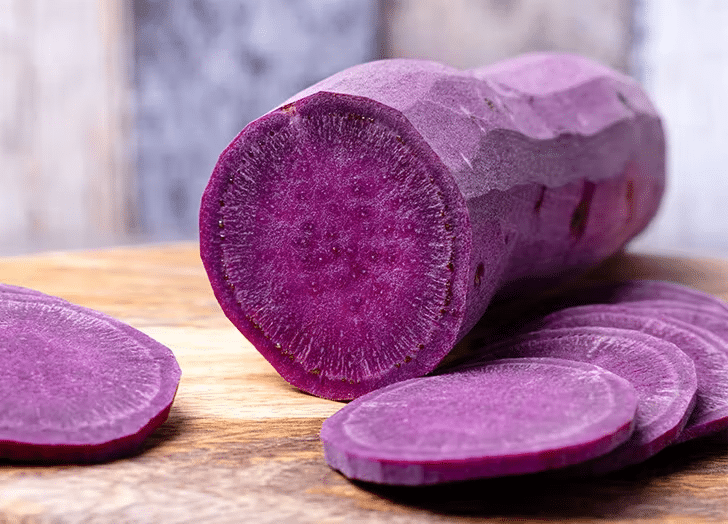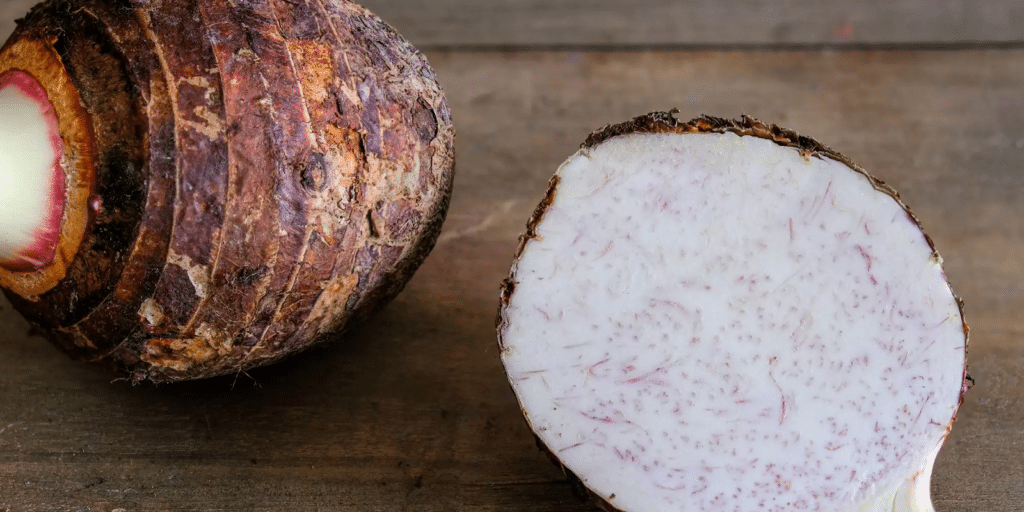Generally, people confuse Ube and Taro since both have brownish bark. Compared to the inside, however, Ube and Taro appear far different. Taro has a light-coloured inside flecked with dots, while ube has a purple hue.

‘Ube’ is derived from Tagalog, which is the dialect of the Philippines. Translated literally, it means “tuber”. Tubers are thick underground stems of plants, so yams are tubers too. They turn purple when cooked. This is why yams are known as purple yams.

Taro is commonly found in Southeast Asia and India. Because it was first discovered in New Zealand, its name originates from the Māori language. Pacific islands still grow it extensively. Over 2,500 years ago, it was brought to Japan by traders and became part of Japanese cooking. It is also known as dasheen.
Comparison
You’ll recognize both taro and ube as members of the sweet potato family if you’ve ever eaten sweet potatoes or yams. What separates them, however, is their colour. Ube has a unique, solid purple colour that is distinct and distinctive. Taro is a whitish-beige colour with dark specks.
Usually brown, but sometimes with a slight purplish tint, Ube has a rough outer surface. The yam is purple when you first open it, and the colour darkens as it cooks. Taro, however, has white stripes on its outer layer and feels rough. A pale tissue with brown specks can be seen when you cut it open. A little purple-grey colour appears once it’s cooked. Also, the roots appear almost oval.
Ube vs Taro in Bubble Tea
Taro, ube, and other milk tea flavourings are usually flavoured with purple colouring to distinguish them from other milk tea flavours. Bubble teas made with Taro milk tend to have a pale lavender colour, while those made with Ube have a deeper, richer purple. Usually, bubble tea is flavoured with either ube or taro. Additionally, boba pearls themselves are sometimes created with them.
Its flavour is similar to sweet potatoes, earthy, nutty, and slightly sweet in bubble tea. While it can taste like vanilla, the extra creaminess comes from the starch in the taro. A lot of people enjoy the thick mouthfeel it gives. If you want a taro milk bubble tea that has a nutty flavour, you need to use a powder that isn’t sweetened. Rather than being nutty, taro is more raw and starchy. Many people who like less sweet foods will replace purple yam with it in their cooking. Taro boba and desserts are typically not too sweet, which is why millennials like them so much.
Ube is a common base for dessert-flavoured milk teas in bubble tea since its flavour is similar to vanilla. The nuttiness of ube keeps it from making the milk tea too sweet, but it also adds a hint of nuttiness. The taste of ube is similar to that of yams, but there is a hint of nuttiness when compared to the taste of taro. Aside from its delicious flavour, ube is renowned for its bright hue in desserts.
The colour of the ube milk bubble tea differentiates it and its flavour from other bubble teas, particularly since it is often served alongside many other bubble tea flavours. Its sweetness is sometimes compared to honey, vanilla, or white chocolate. Filipino dessert recipes often contain it, which is why it appears so frequently in them.
Conclusion
These root vegetables can be found in a wide variety of foods since both are hardy plants and readily available. Are food creatives more likely to prefer ube versus taro because people like to be innovative with their food? It appears so. Using Instagram, for example, we can see the community adores the eye-catching purple yam as an ingredient in ice cream and even boba tea. In addition, videos using ube were more common in Tiktok food trends than taro. Nevertheless, both root vegetables are fantastic on their own. Ubes and Taros have unique tastes, textures, and appearances that will fit different preferences.






